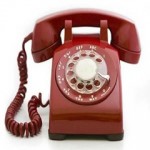Tips for Conducting Campaign Polls
May 4, 2009

Politicians have conducted opinion polls for years, seeking insights into voter attitudes and behavior. Understanding how voters feel and think can help you craft a winning message, and conduct a successful campaign.
With new technology, political candidates at all levels of government can conduct their own opinion polls, right from their office. But there are a few key guidelines for getting the most out of opinion polling. Follow these tips to create effective polls for your campaign today.
Plan your Poll
In planning your poll you should consider:
– What information you want to obtain?
– What is your target group or population?
– What questions are you going to ask your respondents in order to obtain the information you want?
Use Clear Language
While your questions can and should be conversational, use familiar vocabulary and avoid “slang” phrases or unfamiliar words. Questions should be worded in clear, unambiguous language that all respondents can understand. Pare down to essentials, using the fewest number of words necessary to ask a question.
Avoiding Doing Multiple Things in One Question
Each question should ask only one thing. For example, avoid questions like “Do you favor removing long-serving elected officials from office through the use of term limits?”
A person who answers “No” could be referring to not favoring removing long serving elected officials from office or to favoring removal but not through the use of term limits.
Instead, you ask whether respondents favor removal of long serving elected officials. Then ask one or more follow up questions about how this could be accomplished.
Avoiding Assumptions
Your questions should avoid assuming too much knowledge on the part of the respondent.
For example: “Do you approve of Senator Jones’ plan to change the state flag?” assumes the respondent knows of Senator Jones’ plan and the changes it will make to the state flag.
Instead, you can provide all respondents with the same information: “Senator Jones has proposed a plan to change the color of the state flag from red to purple. Do you approve or disapprove of this plan?”
Or, you could filter the respondents by asking, “Have you heard or read about Senator Jones’ plan to change the state flag?” This type of question separates those respondents with knowledge of the subject from those having no knowledge.
Based on their response, you can automatically branch those who have heard about the plan to an approve/disapprove question. Those with no knowledge of the subject can be directed to other questions.
Loaded Questions and Loaded Response Choices
You should try to avoid questions and response choices that push respondents toward a particular response. This can involve wording a question to make a particular answer more acceptable, emphasizing the status quo, or treating a particular response as more desirable or important than other responses.
For example: “In the upcoming senate election, do you intend to vote for the incumbent, Senator Sarah Smith, or the challenger, Bill Johnson?” could influence undecided voters.
To avoid swaying those without strong opinions, try: “In the upcoming senate election do you intend to vote for Sara Smith or Bill Johnson?”
Including “don’t know” or “no opinion”
Not all respondents will have an opinion on every issue, topic or question. Therefore, you should include a “don’t know” or “no opinion” response option with most questions. This helps you eliminate possible random responses from those who don’t have an opinion.
Opening Your Poll
If your poll or survey is relatively short, let the respondents know ahead of time. For example, your greeting could say: “We will be asking your valuable opinion on three questions which will take less than one minute of your time.” This can help increase your response rates.
When setting up a poll or survey, place questions dealing with the most interesting topics at the beginning of your poll. This can help establish your respondent’s interest from the start of your poll.
Polling Regulations
FCC regulations permit polling and surveying between the hours of 8 a.m. and 9 p.m. Typically your highest response rates will occur between 4 p.m. and 9 p.m. on weekdays and weekends because more people are at home during these times.
When polling and surveying, the FCC requires you to identify yourself and provide contact information (such as phone number or address). You can do this at the beginning or end of your poll.
It is best to provide your identification during your greeting and your contact information at the end. To expand your reach, invite respondents to visit your website to see results of your poll and learn more about your campaign.
About the Author:
Don Guy is president of Orion Systems, developers of Pollster™, new technology that allows politicians to run public opinion polls for a fraction of the traditional cost, using phone lines and a desktop computer. Visit www.pollster.org for more information.

